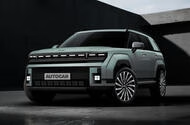How Is the 2026 Hyundai Tucson Changing Its Look to Stand Out?
If you’ve followed the evolution of family SUVs, you know the market is crowded with options that can start to blur together. Hyundai’s answer for 2026? A bold redesign of its best-selling Tucson that ditches the soft curves for a boxier, more rugged vibe. This isn’t just a facelift—it’s a statement.
Drawing inspiration from the larger Santa Fe, the new Tucson leans into Hyundai’s ‘Art of Steel’ design language. That means a longer hood, chunkier wheel arches, and a stance that’s more upright and assertive. Even under heavy camouflage, the test mules spotted on public roads look like they mean business.
What’s behind this shift? According to Hyundai’s design chief, Simon Loasby, it’s about giving each model its own personality—think chess pieces, not Russian dolls. The goal is to make the Tucson feel more capable and SUV-like, echoing the transformation seen in the hydrogen-powered Nexo. It’s a move that aligns with global trends: buyers everywhere want SUVs that look and feel substantial, with commanding seating positions and a sense of adventure baked in.
Will the New Design Make the Tucson More Practical?
Looks aren’t everything, especially for families who need their SUV to work as hard as it plays. The good news: the Tucson’s new shape isn’t just for show. The more upright stance and extended body lines are expected to translate into a roomier cabin and possibly an even bigger boot than the current model’s already generous 620 liters.
That’s a big deal for anyone who’s ever tried to pack for a road trip or juggle sports gear and groceries. Hyundai seems to be listening to real-world needs, not just chasing trends.
What’s Changing Inside the Cabin?
Step inside, and you’ll notice Hyundai is rethinking the modern SUV cockpit. While many rivals are locked in a race for the biggest, flashiest screens, Hyundai’s taking a different tack. The next-generation Tucson is likely to feature a slightly smaller infotainment display, simpler software, and—get this—more physical buttons.
Why the throwback? Safety. Both Loasby and Hyundai Group design boss Luc Donckerwolke have emphasized that tactile controls reduce distraction and make it easier to keep your eyes on the road. It’s a refreshing nod to usability in an era where touchscreens can sometimes overcomplicate simple tasks.
What Powertrain Options Will the 2026 Tucson Offer?
Under the hood, expect the Tucson to borrow heavily from the Santa Fe’s playbook. That means a choice between a 212-horsepower 1.6-liter turbo petrol hybrid (available with front- or all-wheel drive) and a punchier 249-horsepower plug-in hybrid (all-wheel drive only).
This dual approach is smart. Hybrid tech is no longer a niche—according to the International Energy Agency, global hybrid and plug-in hybrid sales grew by over 30% in 2023. Hyundai’s strategy positions the Tucson to meet both environmental regulations and the practical needs of drivers who aren’t quite ready to go fully electric.
How Does the Tucson Stack Up Against Rivals Like Volkswagen and BMW?
Hyundai isn’t shy about its ambitions. The Tucson has been a major growth engine for the brand, especially in Europe, where it’s gone head-to-head with heavyweights like Volkswagen and BMW. Last year alone, Hyundai moved around 600,000 Tucsons worldwide—a testament to its broad appeal.
But the competition is fierce. Volkswagen’s Tiguan and BMW’s X1 have strong followings, and both brands are constantly updating their lineups. Hyundai’s answer is to double down on what makes the Tucson unique: bold design, practical features, and a value proposition that’s hard to ignore.
What’s the Real-World Impact for Drivers?
For families and everyday drivers, the 2026 Tucson’s changes aren’t just about keeping up with trends—they’re about making life easier. More space, smarter controls, and efficient hybrid options all add up to an SUV that’s genuinely useful, not just stylish.
And let’s be honest: in a world where so many cars feel interchangeable, a little personality goes a long way. The new Tucson looks set to bring that in spades.
Looking Ahead: Should You Wait for the 2026 Tucson?
If you’re in the market for a family SUV and can afford to wait, the upcoming Tucson is shaping up to be worth your patience. It blends rugged looks with real-world practicality, offers powertrains that fit today’s needs, and aims to make driving safer and less stressful.
Hyundai’s willingness to rethink both design and usability shows they’re not just following the crowd—they’re listening to what drivers actually want. And that, more than any spec sheet, is what makes the 2026 Tucson a model to watch.

